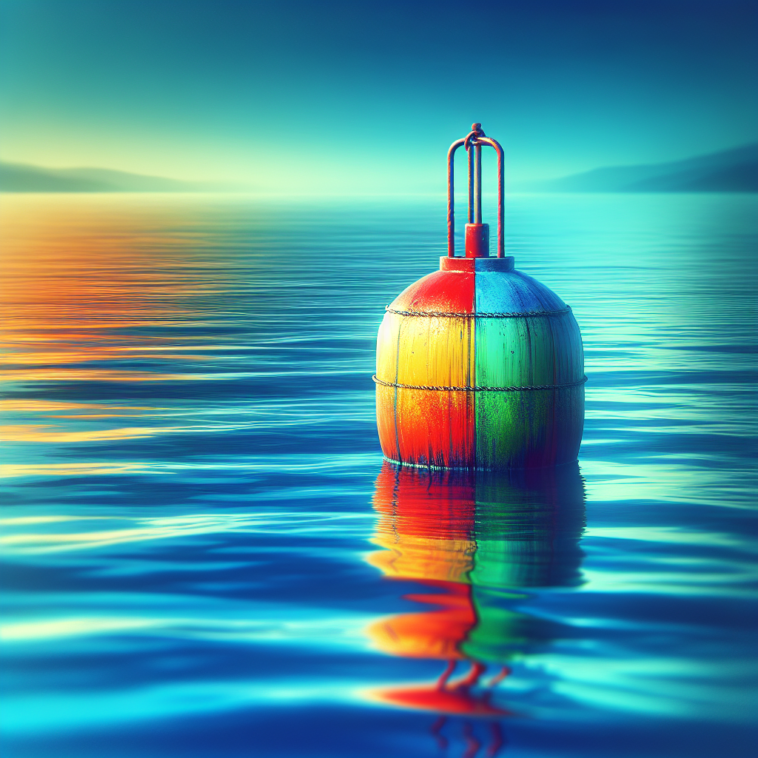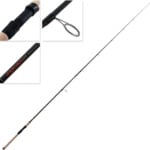So you’re planning a boat trip and the last thing you want is to be dealing with seasickness, right? Well, worry no more because this article has got you covered. We all know that feeling of an upset stomach and queasiness as the boat rocks back and forth, but with a few simple tips and tricks, you can prevent and handle seasickness like a pro. From natural remedies to practical techniques, you’ll be able to enjoy your time on the water without any discomfort. So hop on board and let’s navigate through the world of seasickness prevention!
Understanding Seasickness
What is seasickness?
Seasickness, also known as motion sickness, is a condition that occurs when your body’s sense of balance is disrupted by the motion of a boat or other form of transportation on the water. It is a common and unpleasant experience that can affect anyone, regardless of their age or experience at sea.
Causes of seasickness
Seasickness is caused by a conflict between the inputs received by your brain from your eyes, inner ears, and other sensory receptors. When you are on a boat, your eyes perceive the motion of the waves, while your inner ears, which are responsible for maintaining balance, feel the rocking motion. This discrepancy in sensory information can lead to feelings of nausea, dizziness, and general discomfort.
Symptoms of seasickness
The symptoms of seasickness can vary from person to person, but commonly include nausea, dizziness, vomiting, headache, cold sweats, and loss of appetite. These symptoms can make a boat trip miserable if not properly addressed and managed.
Preparing for the Trip
Choose the right boat
When planning a boat trip, it is important to choose a boat that is suitable for your needs and ensures a stable and smooth ride. Opt for boats that are larger and have a good stability rating. Catamarans and larger cruise ships are generally more stable and less prone to rocking motions, making them a better choice for those susceptible to seasickness.
Check weather and sea conditions
Before embarking on a boat trip, it is crucial to check the weather and sea conditions. High winds and rough seas can greatly increase the likelihood of experiencing seasickness. Pay attention to weather forecasts, consult with local authorities or boat operators, and use your judgment to decide if it is safe and suitable to proceed with your trip.
Pack essential items
To prepare for the possibility of seasickness, it is essential to pack a few items that can help alleviate symptoms. These include:
- Anti-nausea medication: Consult your healthcare professional and obtain any necessary medication for seasickness. It is important to follow their guidance and dosage instructions.
- Ginger: Ginger has long been used as a natural remedy for nausea. You can find ginger candies, ginger tea, or ginger supplements to take with you on the trip.
- Acupressure bands: These bands apply pressure to specific acupressure points on the wrist, which some people find helpful in relieving seasickness.
Managing Seasickness with Medication
Consult a healthcare professional
If you are prone to seasickness or are unsure about which medication to use, it is advisable to consult a healthcare professional. They can provide guidance on which medications are suitable for your individual circumstances and offer advice on dosage and possible side effects.
Over-the-counter remedies
There are various over-the-counter medications available that can help alleviate the symptoms of seasickness. These include antihistamines, such as dimenhydrinate and meclizine, which can help reduce nausea and dizziness. These medications are generally safe and effective when used as directed.
Prescription medications
For individuals who experience severe seasickness or have not found relief from over-the-counter remedies, prescription medications may be recommended. These medications, such as scopolamine patches, are typically stronger and require a prescription from a healthcare professional. It is important to consult with your doctor to discuss the potential benefits and risks of these medications.
Natural Remedies to Alleviate Seasickness
Ginger
Ginger has long been recognized for its anti-nausea properties and is a popular natural remedy for seasickness. Ginger can be consumed in various forms, including ginger candies, ginger tea, or ginger supplements. Many people find that consuming ginger before and during a boat trip can help alleviate nausea and discomfort.
Acupressure bands
Acupressure bands, also known as seasickness or motion sickness bands, are worn on the wrists and apply pressure to specific acupressure points. The pressure applied to these points is believed to relieve nausea and other symptoms associated with seasickness. Many people find acupressure bands to be an effective and non-invasive natural remedy for seasickness.
Deep breathing and relaxation techniques
Deep breathing and relaxation techniques can help calm your mind and body, reducing feelings of anxiety and nausea. Practice deep breathing exercises, focusing on slow, steady breaths, and incorporate relaxation techniques such as visualization or progressive muscle relaxation. These techniques can be used before and during a boat trip to promote a sense of calm and alleviate symptoms of seasickness.
Behavioral Techniques for Seasickness
Find a stable position
To minimize the impact of boat motion on your body, try to find a stable position on the boat. This typically means staying in the middle of the boat, as this area experiences the least amount of rocking motion. If possible, choose a seat or spot on the boat where you can brace yourself against a stable surface, such as a rail or a seat back.
Focus your gaze on the horizon
Another helpful technique is to focus your gaze on a fixed point on the horizon. By looking at a stationary object in the distance, such as a shoreline or a distant boat, you can help recalibrate your sense of balance and reduce feelings of dizziness and nausea. Avoid looking at objects inside the boat or engaging in activities that require constant visual attention, as this can exacerbate symptoms.
Avoid strong odors
Strong odors, particularly those associated with food or fuel, can trigger or worsen feelings of nausea. To help prevent seasickness, try to avoid areas of the boat where strong smells are present. If you are sensitive to odors, consider staying in well-ventilated areas or stepping outside for fresh air when possible.
Maintaining Proper Diet and Hydration
Stay hydrated
Dehydration can worsen the symptoms of seasickness, so it is important to stay hydrated throughout your boat trip. Drink small sips of water frequently to maintain hydration levels. Avoid consuming large quantities of fluids at once, as this can contribute to feelings of nausea. Additionally, consider drinking clear liquids, such as ginger ale or electrolyte-enhanced beverages, which can help settle the stomach.
Eat light and easily digestible foods
When it comes to food, it is best to stick to light and easily digestible options to help prevent seasickness. Avoid heavy, greasy, or spicy foods that can sit heavily in your stomach and contribute to feelings of nausea. Opt for bland foods such as crackers, bread, or dry cereal, which are gentle on the stomach and can help absorb excess stomach acid.
Avoid alcohol and caffeine
Alcohol and caffeine can both dehydrate the body and exacerbate the symptoms of seasickness. It is advisable to avoid consuming these substances before and during your boat trip. Instead, focus on hydrating beverages and herbal teas. If you do choose to consume alcohol or caffeinated beverages, do so in moderation and be mindful of their potential effects on your body.
Choosing the Right Seating and Positioning
Sit or stand in the middle of the boat
To minimize the effects of boat motion, it is generally recommended to sit or stand in the middle of the boat. This area experiences the least amount of rocking motion and can help stabilize your body. If possible, secure a seat or spot where you can brace yourself against a stable surface, such as a rail or a seat back, to further enhance stability.
Face the direction of travel
Facing the direction of travel can help your brain better anticipate and align with the motion of the boat. By aligning your body with the direction the boat is moving, you can reduce the sensory discrepancies that contribute to seasickness. If possible, choose a seat or position on the boat that allows you to face forward and maintain visual contact with the horizon.
Avoid cabin confinement
Spending time in a confined cabin or below deck can exacerbate symptoms of seasickness. The motion of the boat is typically more pronounced in these areas, leading to increased feelings of nausea and discomfort. If possible, spend time on the deck where you can access fresh air and have a wider range of visual stimulation. Being in open spaces can help reduce feelings of claustrophobia and contribute to overall well-being during the boat trip.
Staying Engaged and Distracted
Participate in activities
One effective way to alleviate seasickness is to actively participate in activities on the boat. Engaging in light physical activity, such as walking on the deck or participating in onboard games, can help distract your mind from feelings of nausea and keep your body and mind occupied. However, avoid activities that require excessive motion or strain, as these can exacerbate symptoms.
Listen to music or audiobooks
Listening to music or audiobooks can provide a sense of distraction and relaxation during a boat trip. Choose calming and soothing music or opt for an engaging audiobook that captures your attention. The audio stimulation can help divert your focus away from the motion of the boat and minimize sensations of nausea.
Engage in conversation
Engaging in conversation with fellow passengers or crew members can help keep your mind off the unpleasant sensations of seasickness. Talking and interacting with others can provide a sense of connection, divert your attention, and alleviate feelings of anxiety or discomfort. Embrace the opportunity to socialize and share experiences with those around you.
Practicing Mindfulness and Relaxation Techniques
Visualization exercises
Visualization exercises can help calm your mind and create a sense of relaxation and stability. Close your eyes and imagine yourself in a calm and peaceful environment. Visualize the boat as a stable platform gliding gently on the water. Use your imagination to create a mental image that promotes feelings of calmness and steadiness.
Progressive muscle relaxation
Progressive muscle relaxation is a technique that involves tensing and then releasing different muscle groups in your body. This technique can help alleviate tension and promote a sense of relaxation. Begin by tightly contracting a specific muscle group, such as your hands or shoulders, and then release the tension, allowing the muscles to relax completely. Repeat this process with different muscle groups throughout your body to promote overall relaxation.
Meditation
Meditation is a practice that involves focusing your attention and eliminating the stream of thoughts that often cause anxiety and distress. Find a comfortable position and close your eyes. Focus your attention on your breath, allowing it to flow gently in and out. If thoughts or distractions arise, gently redirect your attention back to your breath. Regular meditation practice can help train your mind to stay calm and centered, reducing the likelihood of experiencing seasickness.
Seeking Professional Assistance
Onboard medical professional
Many larger boats and cruise ships have onboard medical professionals who can provide assistance and guidance in managing seasickness. These professionals are trained to assess and treat medical conditions, including motion sickness. If you are experiencing severe symptoms or are in need of medical attention, do not hesitate to seek assistance from the onboard medical staff.
Pharmacist or crew members
In addition to onboard medical professionals, crew members and onboard pharmacists can also provide guidance and assistance with managing seasickness. They can offer over-the-counter remedies or suggest alternative strategies to alleviate symptoms. Do not hesitate to approach them if you are in need of assistance or information.
Marine medical centers
If you are on a longer voyage or a boat trip in remote areas, there may be marine medical centers available for consultation and treatment. These centers are equipped to handle medical emergencies and can provide specialized care for individuals experiencing severe seasickness. Consult your boat operator or local authorities for information on nearby marine medical centers and emergency services.
In conclusion, preventing and handling seasickness on a boat involves a combination of preparation, medication, natural remedies, behavioral techniques, proper diet and hydration, choosing the right seating, staying engaged and distracted, practicing mindfulness and relaxation techniques, and seeking professional assistance when needed. By following these strategies, you can better enjoy your boat trip and minimize the discomfort associated with seasickness. Remember, everyone’s experience with seasickness is unique, so finding the combination of strategies that works best for you may require some trial and error.





